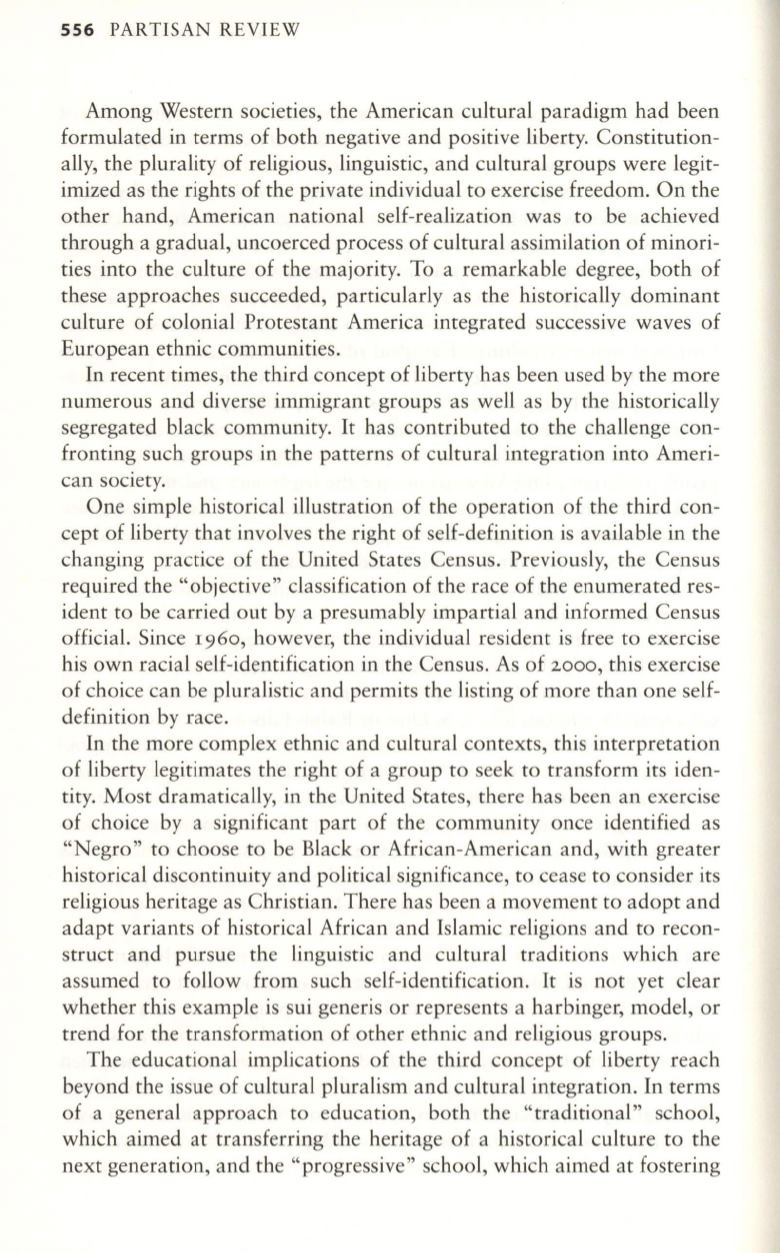
556
PARTISAN REVIEW
Among Western societies, the American cultural paradigm had been
formulated in terms of both negative and positive liberty. Constitution–
ally, the plurality of religious, linguistic, and cultural groups were legit–
imized as the rights of the private individual to exercise freedom. On the
other hand, American national self-realization was to be achieved
through a gradual, uncoerced process of cultural assimilation of minori–
ties into the culture of the majority. To a remarkable degree, both of
these approaches succeeded, particularly as the historically dominant
culture of colonial Protestant America integrated successive waves of
European ethnic communities.
In recent times, the third concept of liberty has been used by the more
numerous and diverse immigrant groups as well as by the historically
segregated black community. It has contributed to the challenge con–
fronting such groups in the patterns of cultural integration into Ameri–
can society.
One simple historical illustration of the operation of the third con–
cept of liberty that involves the right of self-definition is available in the
changing practice of the United States Census. Previously, the Census
required the "objective" classification of the race of the enumerated res–
ident to be carried out by a presumably impartial and informed Census
official. Since
I960,
however, the individual resident is free to exercise
his own racial self-identification in the Census . As of
2000,
this exercise
of choice can be pluralistic and permits the listing of more than one self–
definition by race.
In the more complex ethnic and cultural contexts, this interpretation
of liberty legitimates the right of a group to seek to transform its iden–
tity. Most dramatically, in the United States, there has been an exercise
of choice by a significant part of the community once identified as
"Negro" to choose to be Black or African-American and, with greater
historical discontinuity and political significance, to cease to consider its
religious heritage as Christian. There has been a movement to adopt and
adapt variants of historical African and Islamic religions and to recon–
struct and pursue the linguistic and cultural traditions which are
assumed to follow from such self-identification. It is not yet clear
whether this example is sui generis or represents a harbinger, model, or
trend for the transformation of other ethnic and religious groups .
The educational implications of the third concept of liberty reach
beyond the issue of cultural pluralism and cultural integration. In terms
of a general approach to education, both the "traditional" school,
which aimed at transferring the heritage of a historical culture to the
next generation, and the "progressive" school, which aimed at fostering


